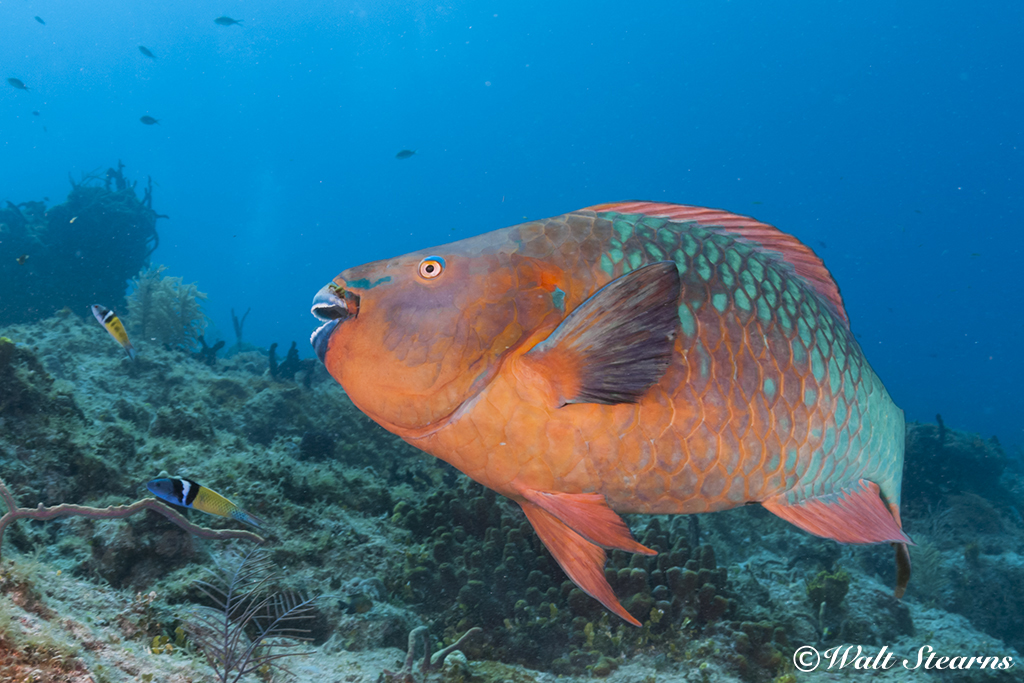
There's nothing common about these familiar reef dwellers
Make a dive on most any coral reef and you will probably see a parrotfish or lots of parrotfish. These close relatives of the wrasses are found on tropical reefs around the world. And that’s a good thing because, without parrotfish, the very health of the reefs would be in jeopardy, and we humans might not be able to enjoy a walk on the beach. But we’re getting ahead of ourselves. Before talking about the benefits these colorful reef-dwelling fish provide the environment, let’s start by learning a bit more about them.

Red Fish, Blue Fish
At one point, scientists thought there were more than 300 species of parrotfish swimming about the world’s tropical and sub-tropical oceans. They now put the number at somewhere between 80 and 90. One reason for the confusion is that those first counts were made before in-water observations and DNA testing was a thing. The mix-ups are understandable considering all of the ways these fish change color, shape and even sex over the course of their lives. As a result, two parrotfish of the same species, but of different ages and sex, can look quite different.
The process of labeling these underwater chameleons has resulted in some colorful titles. Midnight is an obvious choice for an all-black specimen, and there’s no mystery behind the names of a red or blue parrotfish. But things get more interesting when you start searching for a rainbow, yellowtail, spotted, marbled, rivulated, green snout or blue-barred parrotfish. And as an alternative to using complex colorations, some parrotfish are sorted on physical characteristics, which give us the roundhead, longnose, ragged fins, steephead, heavy beak, spinytooth, knothead, and green humphead parrotfish. Finally, there are those varieties that apparently thwarted all attempts at logical classification, promoting the biologists to come up with more fanciful descriptions to bestow on the princess, queen, regal and festive parrots.

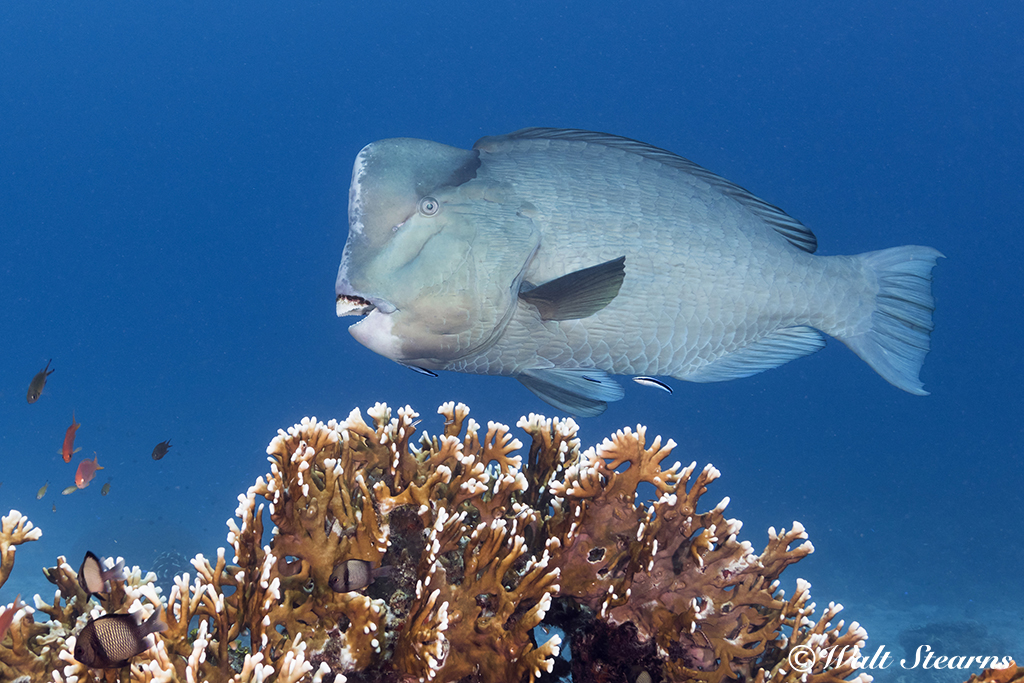
Chew on This
Besides their large scales and often bold color patterns, parrotfish are easily recognized by their distinctive beak-like mouths. Look closer and you will notice that what looks like a beak is actually a row of tightly-packed teeth growing outside the jawbone. These teeth are used to gnaw on coral and rocks, either to scrape up a snack of algae or to actually break loose chunks of the coral itself. Deeper inside the parrotfish’s throat, a different set of molar-like teeth are used to pulverize these chunks of coral and extract the algae and living coral polyps within.
Understandably, all this chewing and grinding creates a lot of wear and tear on the dental work, so parrotfish are constantly regrowing new teeth. Algae and coral polyps make up most of the parrotfish diet, but these fish aren't strict herbivores. When the opportunity arises, they will also feed on a range of reef organisms that can include sponges, zoanthids, worms and other small organisms that just happen to be at the wrong place at the right time. That said, it is the parrotfishes' habit of actually eating the reef that earns these fish a certain degree of notoriety.

Beach Builders and Reef Cleaners
Parrotfish can't actually gain any nutritional benefit from the coral they pulverized. After the living organisms within the hard outer covering are extracted and digested, the remaining inorganic material is dumped overboard. Most anyone who has snorkeled or dove on a tropical coral reef has seen these periodic discharges of parrotfish poop. What they are seeing is the beginnings of a beach. The crushed coral powder made by parrotfish is a primary component of beach sand in many parts of the world. So yes, when you are curling your toes in the sand, you are technically standing on… well, you get the picture.
Scientists still debate just how much sand each parrotfish produces, but the most commonly agreed on the number for a mid-sized fish is around 10 ounces a day. That works out to more than 200 pounds of sand per year, per fish. When you see a school of a dozen fish or so grazing on a coral head, you are looking at the equivalent of a dump truck load of sand production.
In addition to helping to create beautiful beaches, parrotfish directly contribute to the overall health of coral reefs. Before it eventually washes ashore, the sand produced by parrotfish first settles into the shallows to create a sedimentary substrate for burrowing animals.
In the process of feeding on coral polyps, parrotfish may actually help spread the beneficial zooxanthellae algae that corals cultivate. This sort of cross-pollination results in more genetically diverse and resilient reefs. An even more important benefit of all this chewing on the reef is the removal of light-leaching algae from the surfaces of corals. Think of parrotfish as the window washers of the reefs, and when there are no parrotfish, corals become overgrown with algae. In fact, various studies have shown that the presence of parrotfish is one of the single most important contributors to the overall health of a coral reef.
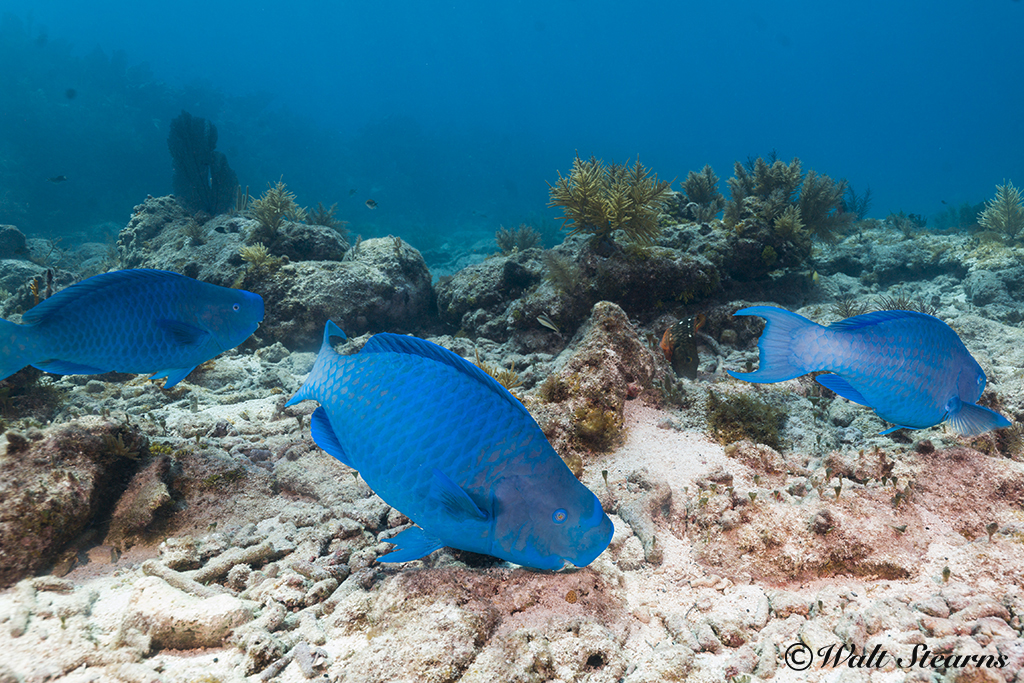
Group Grazing, Sex Changing and Bubble Blowing
Parrotfish are not territorial and get along with just about everything else on the reef. When you see one, there are likely more around, because the often travel and graze in schools. If you stop and listen, you can actually hear them grinding away at the corals. A school of parrotfish is sometimes referred to as a harem because it is made up of a number of females and a dominant male. Parrotfish are hermaphrodites, so if something should happen to the big daddy of the school, one of the ladies will make the change and become the new patriarch. This gender bending may include some dramatic color changes as well.
If you are in the water near sunset, you may see a school of parrotfish begin to scatter, each headed off in search of a sheltering section of the reef. As darkness falls, they will tuck themselves away into nooks and crannies. Some species will also blow a giant bubble. It takes a parrotfish about a half hour to create the mucous cocoon that becomes their bedchamber for the night. This translucent membrane helps mask the parrotfish’s scent, protecting if from foraging predators such as moray eels. A cocooned parrotfish makes for an interesting snapshot during a night dive, but it's considered bad form to keep flashing away with bright strobes for shot after shot, and you should never touch the bubble and disturb the fish.
In some areas of the world, parrotfish are harvested for food. The ancient Polynesians considered them a delicacy reserved for royalty. Other cultures around the world continue to eat these reef builders, despite the risk of ciguatera poisoning. Overfishing has caused local populations to plummet in some regions, but increasing numbers of marine preserves are helping them to rebound. Today, parrotfish are not threatened or an endangered on a worldwide level.
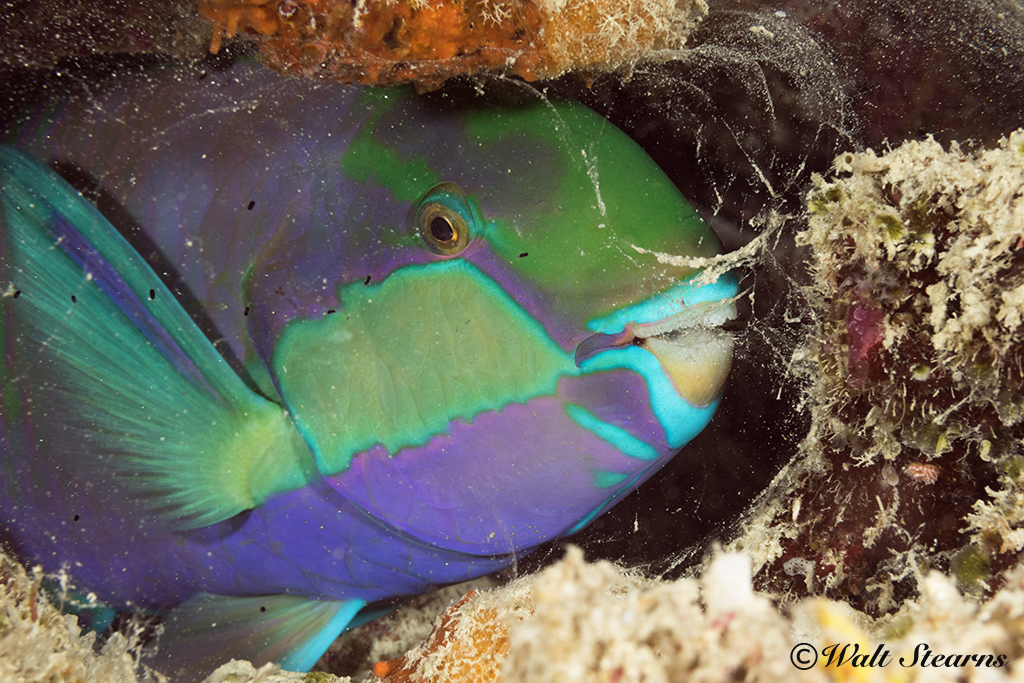
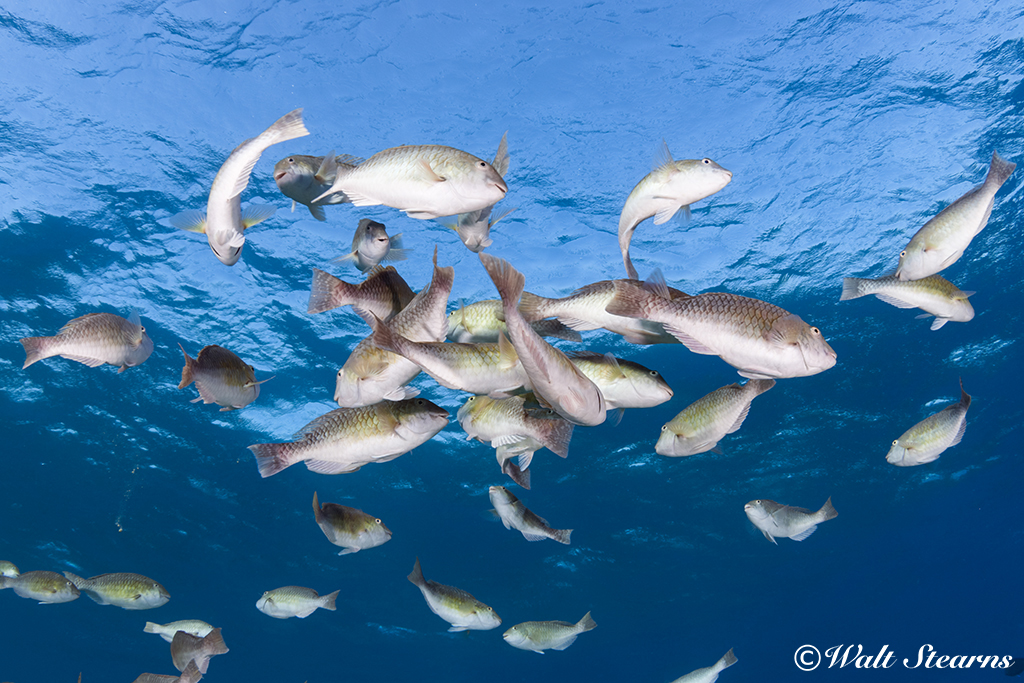
Worth a Closer Look
With so many exotic and unusual creatures awaiting discovery, it would be easy to swim right by a parrotfish without giving it a second glance. Take a closer look, however, and you’ll realize there’s a bit more to the routine comings and goings of these fish than you might at first imagine. Simply getting a positive ID on many varieties can be a challenge, and they always make for willing and interesting subjects for fish portraits. If nothing else, pause for a moment the next time you encounter a parrotfish, and say “thank you” for that wonderful beach you'll be walking later in the day.
